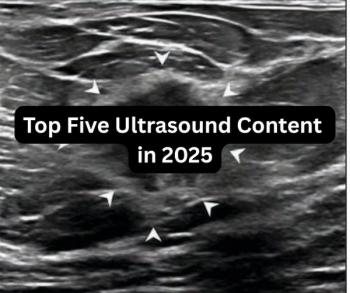
Evolutionary Science Methods Help Create 3D CT Models of COVID-19 Damage
Radiologists have teamed up with evolutionary anatomy scientists, using methods that investigate bird and reptile lungs, to better visualize viral infection in people.
There have been no confirmed cases of COVID-19 infection in reptiles and birds, but a multi-disciplinary team from Louisiana State University Health Sciences Center is using some of the same strategies employed to investigate the lungs of these creatures to confirm diagnosis of the virus in people.
The resulting digital 3D models not only offer greater clarity about how the infection distributes throughout the lungs, but they can also be used as a powerful communication tool about the virus with the general public, the team said.
In an article published in
“The use of 3D digital segmented models from CT data provides the opportunity to evaluate the extent and distribution of the disease in one encapsulated view for clinicians, particularly in the case where RT-PCR for SARS-CoV-2 is negative but there is strong clinical suspicion for COVID-19,” they wrote. “Three-dimensional segmented digital models provide a dramatically clearer method for visually evaluating the impact of COVID-19 on the lungs than straight radiographs, CT data or [RT-PCR] alone.”
The features of CT scans can range in form and structure, they said, appearing to correlate with the progression of the disease. Consequently, this allows for 3D data segmentation in which lung tissue is volumetrically quantified or air flow patterns are modeled.
Schachner and Spieler used established methods from evolutionary anatomy research and scientific visualization to segment the CT scans into 3D digital surface models. One-millimeter slices were used. They created three models that all show varying degrees of COVID-19-related infection, particularly in the back and bottom sections of the lungs.
Because there are no good models that show how COVID-19 acts on the lungs, this model focused on visualizing that lung damage.
“Previously published 3D models of lungs with COVID-19 have been created using automated volume rendering techniques,” Schachner said. “Our method is more challenging and time consuming, but results in a highly accurate and detailed anatomical model where the layers can be pulled apart, volumes quantified, and it can be 3D printed.”
Overall, they pointed out, the holisitic view rendered by this model makes it easier for the wider medical audience to grasp the extent and severity of this pulmonary infection.
“Unlike simple volume rendered images, these models can be 3D printed, and thus have a much broader functional application that allows for the collaboration between basic and clinical scientists, which is particularly important given the critical nature of COVID-19,” they said.
Newsletter
Stay at the forefront of radiology with the Diagnostic Imaging newsletter, delivering the latest news, clinical insights, and imaging advancements for today’s radiologists.




























